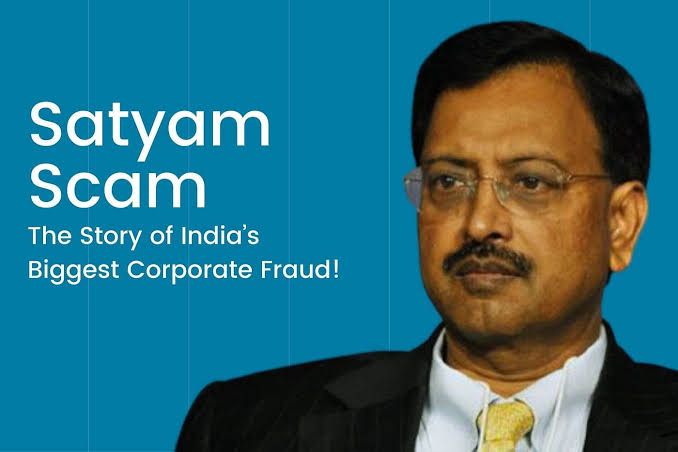Author: Prashant Indoriya , student at Prestige Institute of Management and Research, Gwalior
To the Point
Satyam scam means a huge corporate fraud committed in 2009 by Ramalinga Raju, the founder and chairman of Satyam Computer Services. He confessed to inflating sales, profits, cash reservses, and employee figures in the company’s records. Additionally, he admitted to diverting funds from company for his personal use. The Satyam fraud was considered worth Rs. 7800 crores and was formerly regarded as India’s largest business scandal.
The satyam scandal exposed definciencies in corporate governance, auditing practices, regulatory oversight, and ethical conduct at one of India’s biggest IT companies. It also undermined the trust and confidence of investors, consumers, employees, and stakeholders in the Indian IT sectors.
The Satyam scam was a significant corporate fraud that occurred in India in 2009.The founder and chairman of Satyam Computer Services, Ramalinga Raju, confessed to manipulating the company’s accounts and inflating profits for years. The scam estimated at approximately Rs. 14,000 crore, severely undermined the confidence of investors, shareholders, and stakeholders in the Indian corporate sectors.
Legal Jargon:
The Satyam scam had profound effects on the Indian corporate sector, revealing gaps in the regulatory framework and emphasizing the necessity for more sringent laws and regulations. The government introduced several reforms to improve corporate governance and transparency, such as The Companies Act of 1956 was repealed, and the Companies Act of 2013 went into force.
To the Satyam Scam: How did it Come to Spotlight
In December 2008, Satyam Computers announced that it would acquire 100 percent of the shares in Maytas Properties and Maytas Infra.However, the proposed $1.6 billion purchase was called off the same day, leading to the dipping of Satyam’s stocks.
The following week, the World Bank banned the company from doing business with it for eight years, accusing it of offering illegal incentives to bank employees and failing to provide proper documentation for costs charged to its subcontractors.
In response to the World Bank’s action, several director resigned from the company, and the promoter’s stake diminished.
On January 7, 2009, Ramalinga Raju resigned after admitting to falsifying the company’s financial records. He revealed that the cash and bank balances reported on the balance sheet were significantly inflated by nearly INR 50,400 million.
People and their Roles in Satyam Scam:
Mr Ramalinga Raju (Founder and CEO): He admitted manipulating the accounts of the firm and even attempted to replace fictional assets with genuine ones via the attempted purchase of two Maytas firms, which were promoted and overseen by his own family.
On January 22, 2009, Srinivas Vadlamani, the CFO of Satyam, admitted to inflating the employee count by 10,000. This allowed him to withdraw approximately Rs 20 crore each month from associated but fictitious salary accounts.
Suryanarayana Raju, R. Raju’s brother, held at a 4.3 percent stake in Maytas Infra, which was being sold to Satyam in an effort to swap factitious assets with real ones.
PricewaterhouseCoopers, Satyam’s auditors, stated that their audit report was flawed because statements provided by Satyam’s management.
Board of Directors: BOD approved Satyam’s purchase of real estate firms in which CEO Raju had a significant stake. It was, however, later revoked.
Abstract:
Satyam scam means a huge corporate fraud committed in 2009 by Ramalinga Raju, the founder and chairman of Satyam Computer Services. He confessed to inflating stales, earnings, cash reserves, and employee figures in the company’s records. He also admitted to misappropriating funds from the company for his personal use. The Satyam fraud was considered worth Rs. 7800 crores and was formerly regarded as India’s largest business scandal.
The Satyam scam exposed deficiencies in corporate governance, auditing practices, regulatory oversight, and ethical conduct at one of India’s major IT companies. It also eroded the trust and confidence of investors, consumers, employees, and stakeholders in the Indian IT sector.
The Satyam Computers scam represents one of India’s most devastating scandals, causing a stir throughout the business world. Ramalinga Raju, the founder and chairman of Satyam Computer Services, admitted to falsifying the company’s accounting for many years in 2009. This revelation shocked investors, employees, and regulators, tarnishing both Satyam’s and the Indian business community’s reputation.
Conclusion:
The Satyam scam case demonstrates how human avarice and ambition influence behavior. The Satyam scandal underscores the importance of ethics, robust governance, and accounting standards. It highlights the need for effective securities legislation and corporate governance in emerging markets like India. Satyam Computers scam sparked more strict regulations. Investigating big financial crimes aids in the prevention of future incidents and encourages best practices.
FAQ
- What was the Satyam scam?
Satyam scam was a major corporate fraud that came to light in 2009, involving Satyam Computers.
- What were the key elements of the fraud?
Key elements included inflating sales, earnings, and cash reserves, creating ficititious assets and falsifying bank statement.


